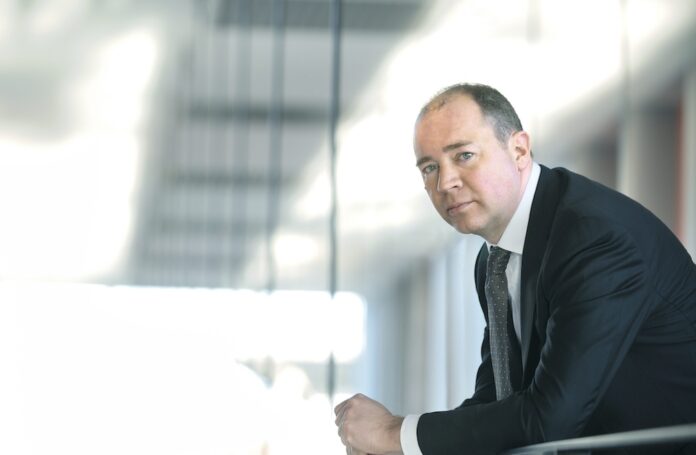German regulator, BNetzA floated the idea last year but Germany’s newest mobile operator wants to sink it
Germany’s fourth mobile network 1&1 – since December – has published a report which slams the idea floated by regulator Bundesnetzagentur (BNetzA) last September to consider extending existing mobile network operators’ spectrum licences in the 800MHz, 1800MHz and 2600MHz bands for five years to 2030. The move would come in place of holding a spectrum auction for frequencies expiring in December 2025.
The operator claimed any licence extension would be “an action tantamount to subsidisation in the billions of euros of the three established network operators.”
1&1, which only just got its Open RAN network up and running last month, commission international consulting firm Aetha Consulting to sheds light on the frequency situation on the German mobile communications market. Luckily for 1&1, Aetha concluded that the upcoming frequency allocation must consider all four network operators: “if effective competition and efficient frequency utilisation are to be ensured.” The study refutes the claims of Deutsche Telekom, Vodafone and Telefónica, which are lobbying for a unilateral extension of their rights of utilisation (which will expire at the end of 2025) and the exclusion of 1&1.
The study also found that since the demise of E-Plus Deutsche Telekom, Vodafone and Telefónica have larger than average frequency portfolios but despite this, Germany lags other major European countries in terms of network availability. It also found some ranges of the mid- and low-band frequencies are currently not being used efficiently.
Any move to extend would impact Deutsche Telekom, Vodafone Germany and Telefónica Deutschland (O2). The regulator – which is consulting on the options – said last September that it would make a wider combined reallocation process decision by 2028 around the long-term provision of frequency usage rights from 2030, which would impact spectrum currently valid to 2033. Additional 2 x 50MHz spectrum in the 1,800MHz band is currently allocated for a limited period until the end of 2033.
According to TeleGeography, Deutsche Telekom, Vodafone Germany and Telefónica Deutschland (O2) all have 800MHz and 2600MHz concessions expiring at end-2025 while Telekom and O2 also have portions of their 1800MHz allocations expiring at that date, with all three MNOs holding additional 1800MHz, 700MHz and 900MHz spectrum blocks expiring in December 2033 alongside 1500MHz licences held by Telekom and Vodafone.
The regular award cycle of the regulator will feature the availability of 60MHz of low-band frequencies in the 800MHz range in addition to the present 240MHz of mid-band spectrum (1800MHz and 2600MHz) as of January 2026.
Mobile myth-busting
1&1’s study compared the frequency portfolios in other countries with four network operators and found that the three established German network operators have significantly more frequencies than the “Top 3 providers” in each of the observed European countries. Specifically, they have access to an average of 38MHz more spectrum in the low-band ranges and their overall portfolio is almost 120MHz larger.
“Seeking to pave the way for Germany to have four mobile networks again, the Federal Network Agency issued special rules for new entrants in the 2019 5G auction. 1&1 invested over one billion euros in its initial high-frequency spectrum and trusted in the provision of additional frequencies by the end of 2025, as was expressly stipulated in the auction conditions”, said 1&1 CEO Ralph Dommermuth (above). “All low-band frequencies in particular are in the hands of the incumbent network operators. Only one-third of the low-band frequencies will become free at the end of 2025 when the 800MHz frequencies become available.”
“In effect, Deutsche Telekom, Vodafone and Telefónica will in any case have unrestricted access to the other two-thirds in the 700 and 900MHz ranges until 2034 as a minimum,” he added. “If 1&1 were to be excluded from the frequency allocation, we would be blocked for many years and would not be able to operate our network competitively.”
Antenna standby
The study revealed that only five per cent of locations across Germany use more than 40MHz of the 60 to 70MHz available to each incumbent network operator. In other words, said 1&1 each network operator could relinquish 20MHz in the 700 or 900MHz frequency range “without any significant losses in the quality of service” – engineers may beg to differ on this one. While 800Mhz, 1800MHz and 2100MHz were well utilised, the report said the 700MHz, 900MHz, 1500MHz and 2600MHz ranges, were not.
In conclusion, an extension of the frequencies solely in favour of the three established network operators would mean that important ranges of the low- and mid-band frequencies would potentially remain unused in the long term, according to the study. This would favour the established network operator over 1&1 for many years.
“If we are treated fairly, we are also open to alternative procedures for frequency allocation – including the extension of frequency rights,” said Dommermuth. “Other countries show how this can be done. In France, for instance, all four network operators – including the newcomer Free Mobile – received an equal share of the frequencies being allocated when the low-band frequency awards were extended as a means of assuring fair competition.”



